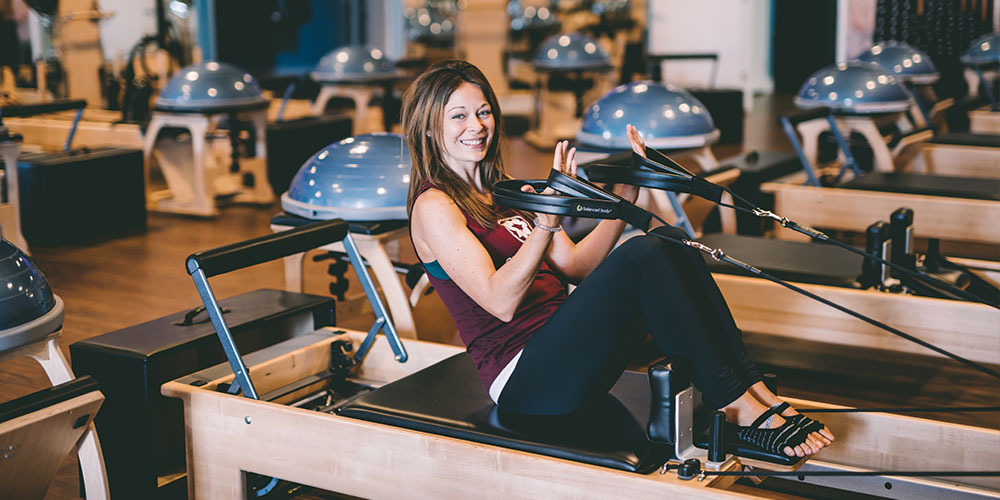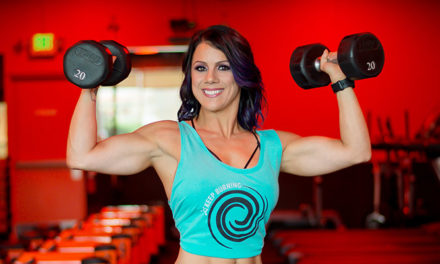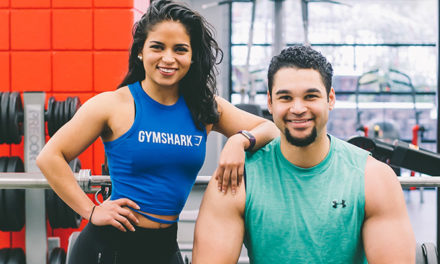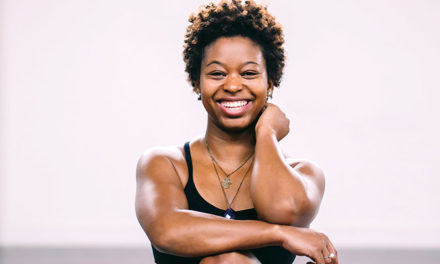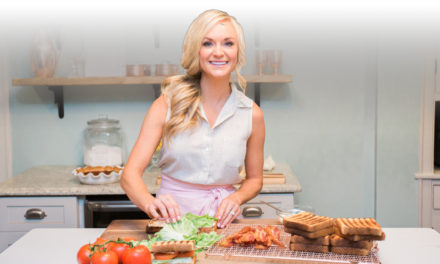St. Louis, MO native Jen Devine found Pilates at a young age. When her mother was diagnosed with arthritis, her physician recommended Pilates as a form of gentle movement that wouldn’t add stress to her joints. Her mother purchased Pilates DVDs, and Jen and her sister joined her. Jen immediately fell in love with the form of movement.
In 2008, Jen moved to Memphis with her husband. Jen decided to step back from her full-time job as a teacher and when considering part-time job opportunities, Pilates came to mind. Jen enrolled in instructor training and loved it. She has taught group classes and private sessions since 2010.
Joining Club Pilates
In July 2021, Club Pilates owner Tara Barnes reached out to Jen with the opportunity to become an instructor at Club Pilates. Tara, a trained physical therapist, opened her first location in East Memphis in 2016. Quickly finding eager clientele, Tara opened a Collierville location in 2018 and a Lakeland location in April 2021.
Jen now teaches at all three locations and is the lead instructor at the Lakeland studio. As the lead instructor, her main priority is to ensure the studio environment is healthy and safe.
She completes equipment checks, provides continued learning opportunities for teachers, and much more.
Club Pilates offers a variety of classes for all levels. New clients are encouraged to take a free, 30-minute introduction class where instructors review the different equipment such as the mat and the reformer, and how to use them.
After completing the introduction class, clients may take a variety of classes with focuses on elements such as cardio, strength, and balance. Club Pilates offers free, monthly workshops to members, where they dive deeper into specialized classes such as prenatal modifications, Pilates for runners, and more.
Pilates Misconceptions
Jen explains, “There is a misconception around who Pilates is for, women with an established fitness regimen, but Pilates is for everyone. It’s for people who have lost mobility, athletes looking to decrease bodily imbalances, elderly people focused on longevity, and fitness lovers looking to increase their strength.”
“No matter your age or body type, it’s never too late to increase mobility and strength.” Jen continues. “Club Pilates wants all bodies to come to the studio. We are not cookie-cutter – we want everyone to feel great.”
Instructors work with clients to provide modifications for any ailments they experience. Jen says, “We aim to serve the community by offering healthful movement. The studio environment is so positive. Our clients become friends and support each other. They cheer on new students.”
Increasing Strength and Mobility
Club Pilates classes aim to increase mobility and strength. Classes are structured to benefit the full body, strengthen the core and large muscle groups, and increase movement in the limbs. “We teach students exercises that are transferrable to
complete everyday movements like squats, getting up and standing, safely,” Jen says. “As a society, we tend to hunch at desks, over computers, or on our phones, which leads to imbalance. Imbalance can lead to injury, and we want to prevent that.”
Classes teach patterns to restore balance in the front and backside of the body, to create a healthy spine, and intentional breath techniques. Full inhales and exhales expand the lungs and help to decrease stress in the body.
Do Pilates Do Life
If you’re someone who’s intimidated to come to a class, Jen says, “Please come. You don’t need to worry about having the ‘right’ clothes if you can or can’t touch your toes, or your fitness level. If you are interested in being here, we want you here.”
Painted on the wall of the studios is the quote, “Do Pilates do life.” Club Pilates aims to provide a path to a fuller, more satisfying physical existence. And most importantly, they want you to know you can start at any time.
For more information or to find a club near you visit Clubpilates.com.
Pilates Workout
Single Leg Circle

STARTING POSITION: Lying on your back in “neutral pelvis,” (when your hip bones and pubic bone are in a line, parallel to the floor), lift one leg straight toward the ceiling, while the other stretches out straight on the ground.

MOVEMENT: Keeping your pelvis and torso stable, drop your lifted leg straight down your midline toward the floor only as low as you can maintain stability in your pelvis and torso, then circle your leg away from your midline and back up straight toward the ceiling making a capital “D” motion. Repeat 5-8 times, then switch legs and repeat.
Leg Pull

STARTING POSITION: Externally rotate your shoulders to reach your arms behind your body, fingers facing away from your body. Keep your palms and heels of your feet grounded, but lift your rear to bring your hips and pubic bone into a straight, diagonal line into a reverse-plank.

MOVEMENT: Maintaining stability in your hips, torso, and shoulders, lift one leg off the floor, reaching it out in front of you only as high as you are able to remain stable in the reverse plank. Lower the heel to connect back with the floor, then switch legs. Switch from one leg to the other, 5 times on each leg, then lower your rear back to the ground to sit.
Scissors

STARTING POSITION: Lying on your back in “neutral pelvis,” lift both legs straight toward the ceiling. Reach your arms toward the ceiling, and lift your torso off the mat with your abdominals, neck relaxed. Reach one leg toward your hands and reach your hands to hold onto that leg, either behind the calf or ankle, while the other leg stretches straight out toward the ground.

MOVEMENT: Maintaining stability through the pelvis and torso, and actively drawing your shoulder blades onto your back (they want to reach around to your sides!), give a gentle pull into the leg in your grasp as you actively reach your other leg away toward the floor. Without changing the position of your torso or shoulders, change legs, giving a gentle pull on the opposite leg as your other leg reaches away toward the floor. Continue to switch legs until 5-8 reps are completed for each leg.
TRANSITION: Lower both torso and legs down to the ground, lying flat on your back. Reach your arms toward the ceiling, keeping your shoulder blades on your back. Gently nod your chin to your chest to lift your heart over the base of your rib cage, using your abdominals (keeping your neck relaxed) to lift your spine off the ground, one vertebrae at a time, all the way to seated.
Supported Rotation*
*Adaptation from Barre Above earthquake series

STARTING POSITION: Place a soft ball or small pillow at the base of your spine, behind your back. Bend your knees and set your feet on the floor in front of you. Hinge at your hips to lower your spine slightly toward the ground away from your legs, pressing into the pillow and reach your arms out in front of you.

MOVEMENT: Keeping both bones in your rear (sits bones) grounded, rotate your spine to reach one arm behind your body, allowing your eyes to look at the arm behind the body. Rotate back to center, bringing both arms straight in front, then rotate the opposite way. Repeat these rotations side to side for 8-12 reps.
TRANSITION: Sit up tall, outstretch both legs on the ground in front, and remove the ball/pillow from behind your back.
*Along with Pilates, Club Pilates offers classes that include Functional Standing Movement, TRX, and Trigger Point. For more information or to find a club near you visit www.clubpilates.com.
Leg Pull Front

STARTING POSITION: Plank position facing the floor; head, shoulders, spine, and hips stable in line, with feet flexed. Plank can be on palms or on elbows.
MOVEMENT: Maintaining stability in your plank, point your toes to propel your plank slightly forward, as if you wanted to tap your head on an object just inches in front of you, keeping the straight line in your plank. As you point and propel forward slightly, lift one pointed foot from the mat, pointing it straight back behind you. Flex both feet to return to your original plank position. Point your toes again, lifting the opposite foot from the mat to reach it behind you, maintaining stability in your plank, and flex to lower the foot to the floor, returning to your original plank position. Repeat this movement, switching from one foot to the other, 5-8 times each side.
By Morgan Stritzinger
Photo by Tindall Stephens

